Atmospheres
2015 Thinking the Earth
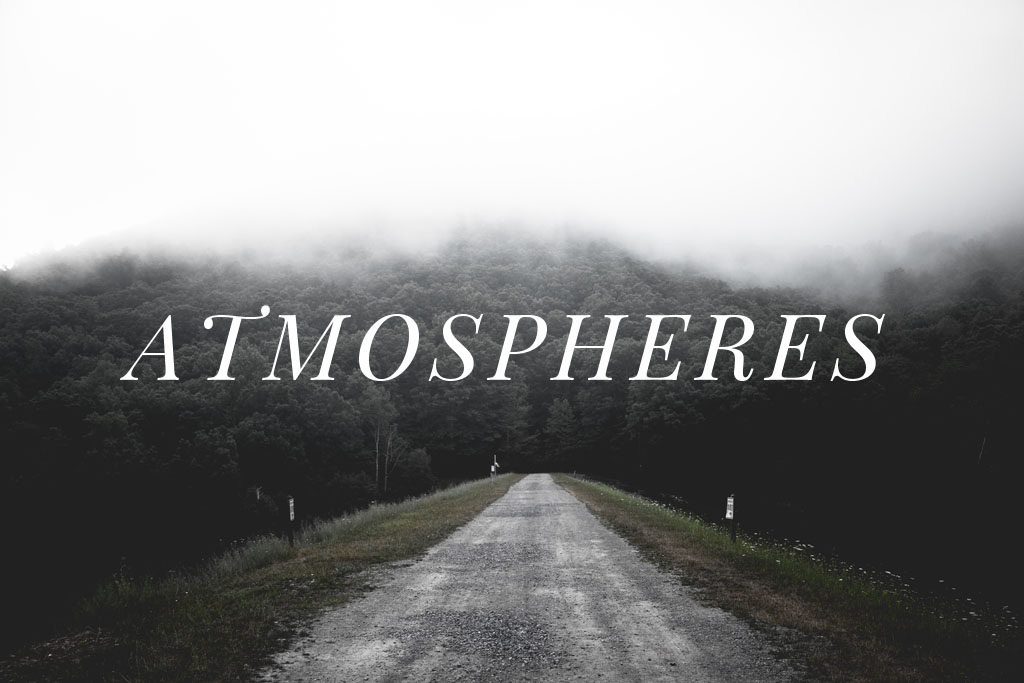
Atmospheres
an Earth, Itself event | 2016
SCIENCE, ART, AND THE AIR THAT SUSTAINS US
From 2015-2018 the Institute at Brown for Environment and Society sponsors an interdisciplinary program under the title of “Earth, Itself,” designed and convened – by Lenore Manderson – to stimulate conversations and collaborations across the natural and social sciences, humanities and the arts.
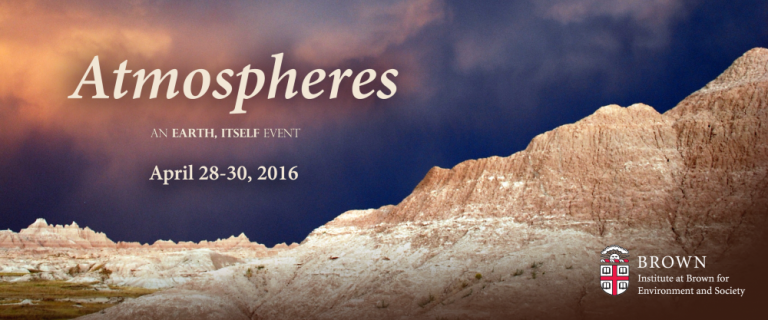
April 28-30, 2016, saw the presentation of Atmospheres, on air, climate and the environment. The event explored such topics as atmospheric circulation and weather; air as habitat—insects and birds; air pollution and quality of air; and legislating, governing and controlling air.
The arts practice, curated by Brown scholar and artist Ed Osborn, included sound art, installations, and music, involving both visiting artists and Brown students.
Concurrently, the John Carter Brown Library mounted an exhibition on air and climate in the early modern world, part of its four-year series on The Four Elements; exploring new ways of engaging—through environmental history—with its renowned collection of books, maps, and prints.
Presenters included Kenyan Dr Mwangi Githiru, an ornithologist and Director of Biodiversity and Social Monitoring at Wildlife Works, Kenya; Michael J. Hathaway (University of British Columbia), author of Environmental Winds; Cymene Howe (Rice University), who works on the politics of wind in Oaxaca; sound artists and acoustic ecologists Leah Barclay (Griffith University, Australia), Lawrence English (Australia), and Garth Paine (Arizona State University); Bina Venkataraman, Director, Global Policy Initiatives, Broad Institute; Tongzhang Zheng, Center for Environmental Health and Technology at Brown; Scott Turner, Director of Web Communications at Brown, and weekly nature commentator for the Providence Journal; and Wendy Woodson, Professor of Theatre and Dance at Amherst College.
The activities included sound and theatre performances, an Ignite! program, and, as with the inaugural year, a poster competition.
The program was open to students and faculty, policy makers, community members, and others who care about the environment, and thrive on scientific discovery, debate, controversy and sound.
April 28-30, 2016
Brown University
Providence, RI
United States of America
Ongoing Sessions
April 1-June 30
Exhibition, Air America
Curated by Joyce Chaplin, James Duncan Phillips Professor of Early American History, Harvard University
9:00am-5:00pm
Though it is mostly invisible to us, we need air—please remember to breathe as you read this. Necessary to life, hard to grasp, air became a powerful metaphor and an actual source of power for life in the new world. Europeans used the wind to get to America, then worried that its air was bad for them (mal-aria). Indian, European, and African peoples of the Americas played and sang musical airs, even operatic arias. Colonists made money from tobacco smoke and from wind-powered sugar-mills. In America, squirrels flew and the Virgin (of Guadalupe) hovered in midair. Soaring eagles represented new American nations. And new world natural phenomena shaped new conceptions of climate that continue to inform debates about life on Earth today.
John Carter Brown Library
April 25-May 6
Sound Installation, Oscillator Pond: Analog Critters in a Digital Pool
Jim Moses, Lecturer and Technical Director, Department of Music
In coordination with the Brown University MEME Program
Audio Sample
8:00am-5:00pm
The critter sounds that populate Oscillator Pond were made on a rare and historic analog synthesizer – an Arp 2500 made in the 1970’s. Organic sounding rhythms and creature-like tones were generated on the the Arp and then captured digitally. The critter sounds are triggered with custom software using probability and random processes to create a surreal and unpredictable soundscape that changes through the day. Visitors can interrupt this “organic mode” to hear specific critter sounds and activate some special playback modes.
IBES Greenhouse
April 28-30
Sound Installations, Room Tones
Ed Osborn, Associate Professor, Visual Art Department, and students
8:00am-7:00pm
Sound installations works by students enrolled in Site & Sound.
Granoff Center
John Carter Brown Library
April 28-30
Sound Installation, Rainforest Listening
Leah Barclay, Griffith University, Australia
Preview
8:00am-7:00pm
Rainforest Listening is an augmented reality installation that layers rainforest soundscapes in urban environments to inspire ecological engagement. Listeners access the sounds via mobile devices and sculpt their own experience by triggering geolocated soundscapes as they walk through iconic locations across the world.
Accessed via mobile devices
April 29-30
Sound Installation, A Hundred Thousand
Brian House, PhD candidate, Computer Music and Multimedia, Department of Music
8:00am-7:00pm
A Hundred Thousand derives from a sound recording made in Botswana while on an expedition through 1,500 miles of the Okavango river system with a multinational team of scientists and members of the regional Ba’Yei community in support of conservation, scientific, and environmental justice initiatives.
Granoff Center
Studio 2
Ongoing Sessions
Thursday | April 28
4.00pm Event Registration
IBES Main Foyer
5.00pm Keynote Lecture
Dr. Mwangi Githiru,
Director of Biodiversity and Social Monitoring at Wildlife Works, Kenya
Atmospheres: A story of space and connexion, thresholds and infinity, despair and promise, A story of life
Chair: Jim Russell, IBES Fellow, Associate Professor of Earth, Environmental and Planetary Sciences
IBES 130
6.00pm Poster Session
IBES Main Foyer
6.30pm Reception + Book Launch
Birders of Africa: History of a Network, by Nancy Jacobs,
Associate Professor of History, Brown University
IBES 101
8.15pm Magic Lantern Cinema presents “Visual Climates”
See the Facebook page for more information
With growing urgency, the world turns its attention to how environmental crises unfold from local to global scales. An enduring concern in addressing ecological problems centres on how the human being perceives the world with the limitations of senses that fail to capture the complex operations of our whole surroundings. This program presents a collection of visual experiments and documents that seek to explore the unknown, imperceptible, micro and macro worlds of our shared ecology.
Cable Car Cinema
204 South Main St.
Friday | April 29
6.00am Campus Birdwalk
led by Scott Turner,
Director of Web Communications, Brown University
Late April in Providence is usually when songbirds, from hummingbirds to warblers and vireos, begin to show up in both variety and numbers on their spring migration north, and post dawn is when most birds typically sing. We will head for the local birding “hotspot,” the trees and shrubs around Woods-Gerry House (RISD Admission Office) on Prospect Street to meet and greet both migrant and resident birds.
Begins outside IBES
85 Waterman Street
10.00am Welcome Address
Neil Safier
Director of the John Carter Brown Library
John Carter Brown
Library
10.15am Panel 1: The Politics of Wind
Chair: Leah VanWey, Interim Director of IBES, Associate Professor of Sociology
Lawrence English, Relational Listening: The Politics of Perception
Cymene Howe, Wind Species
Bina Venkataraman, Windspeed: Bridging planetary and political time horizon
John Carter Brown
Library
12.15pm Lunch and Poster Session
The posters, paintings and videos, from undergraduate and graduate students across disciplines at Brown, include descriptions of scientific research, paintings, and other ways of engaging with questions of environment, climate, ecology and atmosphere.
IBES Main Foyer
1.00pm Ignite!
Chair: Dov Sax
Deputy Director (Teaching) of IBES
Associate Professor of Ecology and Evolutionary Biology
Ignite! is a new innovation, in which faculty and graduate students will present work using PowerPoint in short format – with each presentation lasting around 6-8 minutes. This, like other events, is open to the public and is intended to inspire.
IBES 130
2.30pm Panel 2: Air and Illness
Chair: Lenore Manderson
Conference Convenor
Visiting Professor of Environmental Studies
Bernadette Ramirez
How Climate Change Shapes Health Risk
Tongzhang Zeng
Air pollution & human health in China:
Establishment of a nationwide monitoring network
Garth Paine
Ears on the World
John Carter Brown
Library
4.15pm Break and Afternoon Tea
John Carter Brown
Library
4.45pm Theatre Performance, Drift
Wendy Woodson, Roger C. Holden 1919 Professor of Theater and Dance, Amherst College and the Five College Dance Department
Drift is a work in progress, a performance free association monologue that travels through myriad images, associations and thoughts about atmospheres and the weather. It is written and performed by artist Wendy Woodson.
John Carter Brown
Library
Saturday | April 30
9.00am-7.30pm Sound Installations, Room Tones
Granoff Centre
3.00pm Panel 3: Conservation Concerns
Chair: Nancy Jacobs, Associate Professor of History
Michael J. Hathaway, Winds: A Way to Understand Globalization Differently
Scott Turner, Writing for a Breath of Fresh Air
Leah Barclay, Changing Soundscapes and the Biosphere
Granoff Center
Martinos Audiorium
4.45pm Closing Remarks
5.00pm Reception
Granoff Centre
Ground Floor Lobby
7.30pm Concert, Air Fields
Music and sound art performances
Leah Barclay, Lawrence English, Garth Paine
Pieces by three artists who work with soundscape and field recordings as a central part of their practice are presented in a multichannel listening environment. Leah Barclay’s Temporal Encounters (2016) explores a series of field recordings from UNESCO biosphere reserves across the world. Garth Paine’s Now (2016) is an exploration of a practice he calls “ecological listening.” Lawrence English’s Viento (2015) is built from recordings made during wind storms in Patagonia and Antarctica.
Granoff Centre
Studio 1
LENORE MANDERSON holds appointment as Visiting Distinguished Professor at the Institute at Brown for Environment and Society and Visiting Professor of Anthropology at Brown University. She also teaches in the IEBrown Executive MBA. Her primary work at Brown is a five-year program – Earth, Itself – which bringing natural and social sciences, humanities and the arts in conversations on environmental change and sustainability. Atmospheres is part of this work. Concurrently, she is Professor of Public Health and Medical Anthropology in the School of Public Health, The University of the Witwatersrand, Johannesburg, South Africa, head of the postdoctoral research program, and working on medical interventions, technology, access and equity. She is internationally known for her work in anthropology, social history and public health.
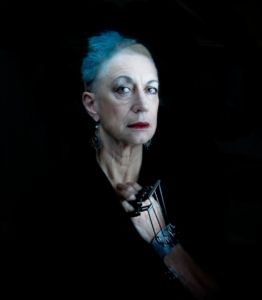
ED OSBORN works with many forms of electronic media including installation, video, sound, and performance. His pieces feature a tactile sense of space, movement, image and aurality combined with a precise economy of materials. Osborn has been a Guggenheim Fellow and resident in the DAAD Artists-in-Berlin Program. He has presented his work at SFMOMA (San Francisco, CA), the Berkeley Art Museum (Berkeley, CA), MassMOCA (North Adams, MA), and the Yale University Art Gallery (New Haven, CT), and in Australia, Germany, and Northern Ireland. Prior to joining Brown he taught in numerous institutions including UC Santa Cruz and the Hochschule für Grafik und Buchkunst in Leipzig, Germany. He is Associate Professor of Visual Art and teaches courses on sound art, physical computing, and electronic media.
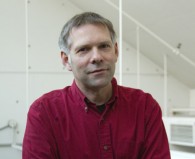
MWANGI GITHIRU is the Director of Biodiversity and Social Monitoring at Wildlife Works. Having been raised and schooled in Kenya, Dr. Githiru received his D.Phil. from the University of Oxford as a Rhodes Scholar. He then spent time at University of Antwerp as a Marie-Curie post-doc fellow, and later, a semester at Brown University as a Watson International Scholar of the Environment Fellow studying African Environmental History. Following a stint working for the Kenyan Government, Mwangi moved to the private sector where he currently spends most of his time working on conservation issues at the intersection of science-policy-economics-development. He is an avid sport and outdoor enthusiast, and is married with a son.
Atmospheres: A story of space and connexion, thresholds and infinity, despair and promise, A story of life
Atmosphere is a peculiarly strange word that brings to mind different things to different people: besides almost unfailingly eliciting a perplexed sigh first, responses seem to converge around certain themes/words including air (heavens and skies), ambience, and envelope. I attempt an exploration of atmospheres from the perspectives of the atmosphere itself and other worldly denizens, in addition to these anthropogenic notions. This journey takes us through some critical thresholds being pushed by humans for this global commons, some ramifications and atmospheric retaliations, and ends with a story of hope―for efforts towards healing the atmosphere are efforts towards healing humanity. That’s the credit!
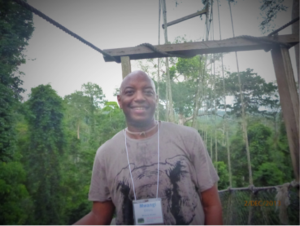
LEAH BARCLAY is an Australian interdisciplinary artist, creative producer, composer and researcher who specialises in electroacoustic music, sound art and acoustic ecology. Her work has been commissioned, performed and exhibited to wide acclaim across Australia, New Zealand, Canada, USA, Europe, India, South Africa, China and Korea. She has been the recipient of numerous awards and has directed and curated interdisciplinary projects across the Asia-Pacific.
Leah has received critical acclaim for her immersive performances, installations and large-scale community projects that explore volatile environments ranging from the central Amazon Rainforest to the floor of the Australian ocean. Her work is multi-platform in nature and often involves long-term community engagement accompanied by the development of virtual platforms to explore the value of digital technology in environmental crisis. Her diverse creative practice has resulted in a dynamic freelance career where she works as an artist, consultant, educator and researcher with various organisations and institutions. These include designing immersive education programs for UNESCO, directing large-scale interdisciplinary research projects for major universities across Australia and the USA and facilitating partnerships between communities, NGOs and government to explore creative approaches to climate action. She is the president of the Australian Forum for Acoustic Ecology and the founder and artistic director of Biosphere Soundscapes, a large-scale interdisciplinary project exploring the changing soundscapes of UNESCO Biosphere Reserves across the world.
Changing soundscapes and the biosphere
The Paris Agreement achieved at COP21 was just the first step in what needs to be a global cultural shift in how people think and act. In our visually dominant society, listening to the state of the environment can reconnect us with nature. Sound can transport us to a place and time and elicit an empathetic response that can be extremely powerful in climate action.
Biosphere Soundscapes is a large-scale interdisciplinary project underpinned by the creative possibilities of acoustic ecology and rapidly emerging fields of biology concerned with the study of environmental patterns and changes through sound. The project is designed to inspire communities across the world to listen to the environment and explore the value of sound as a measure for environmental health in UNESCO biosphere reserves. It is delivered through immersive residencies with artists and scientists, research laboratories, intensive masterclasses and a diversity of creative projects spanning four continents.
Biosphere Soundscapes facilitates local and global partnerships and acts as a catalyst to explore the inherently interdisciplinary nature of sound. It sits at the intersection of art and science, with the recordings providing valuable scientific data for biodiversity analysis and incredible source material for creative works that bring awareness to these environments. Biosphere Soundscapes explores the possibilities of emerging mobile technologies and demonstrates the opportunities for interdisciplinary creativity, the value of environmental listening and the critical importance of community engagement in climate change mitigation and adaptation. Ultimately the project examines the creative possibilities of acoustic ecology in understanding place and rapidly changing environments across the world. This presentation explores recent creative outcomes from Biosphere Soundscapes that showcase the possibilities of augmented reality and mobile technologies for ecological engagement.
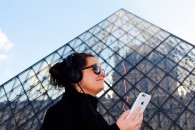
LAWRENCE ENGLISH is composer, media artist and curator based in Australia. Working across an array of aesthetic investigations, English’s work explores the politics of perception and prompts questions of field, perception and memory. English utilises a variety of approaches including visceral live performance and installation to create works that ask audiences to consider their relationship to space, place and experiential embodiment. Over the past decade he has worked across sound as a medium for embodied experience, determined to share his interests in the transformative possibilities of sound.
As a composer, English’s 2014 album Wilderness of Mirrors resonated strongly across Australia and the Northern Hemisphere. The album was widely praised and recognised as one of the most provocative and individual voices of adventurous Australian music in recent times. His compositions occupy a unique position where acoustic and electronic sources share similar textual and timbral qualities, blurring the nature of the source and creating a relative sonic tabula rasa. As a curator, English is actively involved in the development and increased recognition of sound as an art form within Australia, through his record label and multi-arts organization Room40.
Relational Listening: The Politics of Perception
When considering the expanding modes of listening (see Schaeffer, 1966; Chion, 1994; Sonnenschein, 2001; Turri & Eerola, 2012; Truax, 2001), the taxonomies of listening and perception developed by theorists over the past half century, a variety of themes dominate. These themes echo an emergent understanding of the ear, an awakening of the subjectivity of listening brought about by the dawn of the Phonograph. With the invention of the Phonograph came a new ear, the prosthetic ear of the microphone, an ear that unlike our own failed to extract signal from empirical noise. It “heard everything” (Kahn, 1999, p. 9) and revealed to us how our organic ears acted as much (or perhaps more) as filters than listening receptacles (Schafer, 1994). This prosthetic ear also offered us innovative means through which sound might be captured for delivery outside of the time and place in which it occurred. In doing so “listening has in effect experienced an unprecedented transformation, which its technical equipment provokes and reveals” (Szendy, 2008, p. 10). The discourses constructed in the wake of this discovery, and the subsequent technological developments, reflect a historicity of the (mis)understandings of listening up to that moment (Sterne, 2003). Moreover, these discourses signaled the need for a rapid reconsideration of a sense that had been backgrounded for a great many centuries. Whereas the visual world has been subject to widespread documentation, extrapolation and expressionism, the sound world had largely remained mute beyond the moment of utterance. It took the introduction of industrialization and specifically the popularization of recording, playback, and broadcast technologies for the conversation to develop with any vigor.
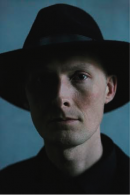
MICHAEL J. HATHAWAY is an associate professor of anthropology at Simon Fraser University in Vancouver, British Columbia. His first book, Environmental Winds: Making the Global in Southwest China (University of California Press, 2013), explores how environmentalism was refashioned in China, not only by conservationists, but also by rural villagers and by animals. His second project examines the global commodity chain of the matsutake, one of the world’s most sought after mushrooms, following it from the Tibetan Plateau to markets in urban Japan. He works with the Matsutake Worlds Research Group, looking at the social worlds this mushroom engenders in Canada, the US, China, and Japan.
Winds: A way to understand globalization differently
We often imagine that globalization is something that happens nearly autonomously, and with teleological direction, shaping the world around us. In contrast, I present a way of understanding social change that I encountered in China, where winds as social forces sweep people up and shape their lives, while at the same time, people’s daily actions generate the wind itself. Using this notion of winds, I explore how global social movements — such as environmentalism or feminism — emerge and transform. I draw on research with Chinese scientists, villagers, and conservationists to show how Western environmentalism was refashioned rather than merely reiterated.
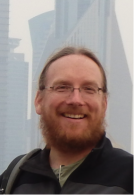
CYMENE HOWE is Associate Professor and Director of Graduate Studies in the Department of Anthropology at Rice University. Her publications include Intimate Activism (Duke 2013) and Ecologics: Wind and Power in the Anthropocene (forthcoming) — a collaborative, multimedia duograph analyzing the social and material contingencies of renewable energy. Her current project develops an anthropology of the elements further, seeking to understand cryohuman interrelations and the implications of climate-induced geohydrological change in the Arctic. She currently serves as co-editor for the journal Cultural Anthropology and the Johns Hopkins Guide to Social Theory.
Wind Species
Mexico’s Isthmus of Tehuantepec is home to the densest concentration of wind parks anywhere on earth. While elemental spheres of air, water and land have long maintained human and other life on the planet, they now represent both salvational “resources” and imperilled domains of extinction and climate turmoil. I take wind as a figure that gathers disparate species that are transformed by wind power and consequently, wind’s powers. In this discussion, I describe thinking with species as a way into relational value scales. Wind and its capture are indicators of energy transition an a distinctive kind of “animal testing:” one that uncovers human attempts to establish calculative equilibrium in what might be more accurately described as species roulette.
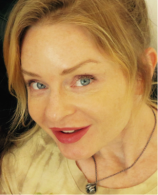
A Hundred Thousand
A Hundred Thousand derives from a sound recording made in Botswana while on an expedition through 1,500 miles of the Okavango river system with a multinational team of scientists and members of the regional Ba’Yei community in support of conservation, scientific, and environmental justice initiatives.
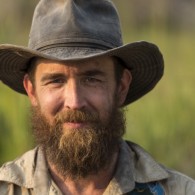
JAMES R. MOSES is an audio producer, composer, sound designer, engineer, and musician. He has worked extensively in electro-acoustic music, radio broadcasting, theatrical sound design, and live and studio music production. His compositions and sound designs include work presented by the International Computer Music Conference (ICMC), Society for Electro-Acoustic Music in the United States (SEAMUS), Fusion Works Dance Company, Providence Firstworks, Free Music Archive, The Acoustical Society of America, The New Jersey Opera Festival, Providence Black Rep, and The Princeton Composers Ensemble. Music recording and live sound engineering includes extensive work in a wide variety of genres. Jim is currently technical director and lecturer at the Brown University Music Department and MEME (multimedia and electronic music experiments) program.
Oscillator Pond: Analog critters in a digital pool
The critter sounds that populate Oscillator Pond were made on a rare and historic analog synthesizer – an Arp 2500 made in the 1970’s. Organic sounding rhythms and creature-like tones were generated on the the Arp and then captured digitally. The critter sounds are triggered with custom software using probability and random processes to create a surreal and unpredictable soundscape that changes through the day. Visitors can interrupt this “organic mode” to hear specific critter sounds and activate some special playback modes. Audio Sample.

GARTH PAINE is a professor of Digital Sound and Interactive Media at the School of Arts Media and Engineering at Arizona State University. His passion for sound as an exhibitable object has given rise to interactive environments where the sonic landscape is generated through gesture, presence and behavior and several music scores for dance works using realtime video tracking and bio-sensing and realtime electroacoustic performance works that have been performed in Australia, Europe, Japan, USA, South America, Hong Kong and New Zealand and in 2014, Korea, Macedonia, France, UK. Garth’s current research centers on the Listen(n) Project, on Acoustic Ecology project that focuses on field recording, creative placemaking and building communities of listeners. He has a long history of composing musical works from his field recordings and engaging in environmental work through sound. Recent examples include the Site Works project at Bundanon, Australia for which he composed the work Presence in the Landscape and his work Becoming Desert for the Listen(n) Symposium concert in 2014. He was a founding member of Ear to the Earth and in 2015 Co-Chaired the Balance-Unbalance conference at ASU.
Ears on the World
Every day we listen to sounds in the world to identify their source. The bird or coyote calls (biophony), the car, motor bike, plane or your sisters voice (anthrophony) or the wind in the foliage, the water in the river (geophony) … But we do not often listen to these sounds as a network of interrelated communications, as a mesh of relationships that forms an ecology. Further, we do not often consider that the sounds we hear are conditioned, augmented and filtered by the environment in which they occur – the rich reverberation created by a rock canyon or the glass skyscrapers of a major city, the quite absorption of a dense undergrowth, thick leaf litter or fresh snow on the ground. Consider also that the density of air varies from the cool mountain top or canyon base to the heat of the open desert plane. In these variations the confluence of sound is conditioned by the hot, less dense air, dispersing the excitation and the fidelity of the sound more quickly than the dense heavy cool air of the mountain top where a uniquely detailed sonic fidelity seems to hang in the air for an inordinate period of time.
If we adjust our listening to engage with the idea of the soundscape as a set of dynamic relationships, and acoustic ecology, then we can consider that they tell us a good deal about the health of the environment in which they occure, the biological ecology. The diversity of and density of species calls, the abundance of vegetation and the profusion of its foliage, the density of the air indicating the temperature of the environment all act as key sonic indexes of environmental condition. These indicators change as environments respond to climate change. The absorption coefficient is reduce as the foliage becomes less or more profuse, the density or diversity of the biophony transforms with a variation in the prevalence of species calls etc.
These forms of critical listening are one of the ways in which acoustic ecology can assist in raising public awareness of environmental changes. Teaching members of the public to listen gives them insight into the richness of the acoustic properties of the environments they frequent. It also provides them with a way to develop stewardship through public engagement and awareness raising and some agency in the efforts needed to care for and manage environments subject to climate change. In addition, the creative application of field recordings in these environments, and the composition and performance of musical works derived from Environmental sounds, provides an accessible way to develop creative capital around the value of acoustic ecologists, and the uniqueness to each site.
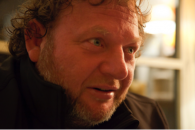
BERNADETTE RAMIREZ has a PhD in Biological Science (Molecular Immunology) from the University of Santo Tomas (Manila, Philippines) and did her PhD Dissertation Research at Brown University as a Fulbright-Hays scholar. She is currently with the Special Programme for Research & Training in Tropical Diseases at the World Health Organization in Geneva, Switzerland. She manages and coordinates a portfolio of research projects that looks at population health vulnerabilities to vector-borne diseases with a goal of increasing community resilience under climate change conditions in Africa. She also coordinates a new research initiative on Health and Environment in Southeast Asia and the Western Pacific region.
How climate change shapes health risk
Current changes in the long-term trends of regional weather patterns, referred to as climate change, are adding new pressures to vector-borne diseases (VBDs), for which the impacts in terms of VBDs-related hazards, vulnerabilities and exposure are anticipated but not yet well described. The existing evidence suggests that climate change impacts will substantially increase burdens on those populations that are already vulnerable to climate extremes. The African continent, notably its drylands, is particularly challenged by environmental changes. There is increased policy attention and commitment to climate and health in Africa, emphasizing the need for transdisciplinary, multi-sectoral approaches to developing actionable strategies that address the cumulative environmental and climate change effects on health. In this presentation, I will highlight the fundamental characteristics of climate as an additional layer of information for the health sector for application in VBD vulnerability assessment, surveillance and forecasting. I will also present some of the current knowledge as to the role of climate processes in disease transmission.
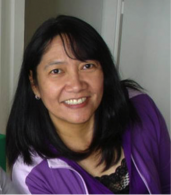
In addition to duties as director of web communications at Brown University, SCOTT TURNER teaches a class at Brown about communicating science, medicine and the environment, and writes a weekly nature commentary for the Providence Journal. A former land manager, park ranger and science writer, he lives in Providence with his wife and two children.
Writing for a breath of fresh air
Providence sits at the mouth of a river and at the head of a bay. Sometimes the city stinks of oil. Other times it smells of the sea. This wind-turbine-studded estuary is both polluted and a productive ecosystem. Let’s look at a short stretch of the shoreline to discuss how to find and appreciate what is right in front of us.
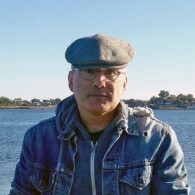
BINA VENKATARAMAN is a Carnegie Fellow at New America and director of global policy initiatives at the Broad Institute of Harvard and MIT. She teaches in the department of science, technology, and society at MIT and writes op-ed columns for several news outlets. Venkataraman previously served as a senior advisor for climate change innovation in the Obama White House, where she led efforts comprising the first climate action plan issued by a U.S. President. She formerly served as senior advisor to the President’s Council of Advisors on Science & Technology, a role in which she drove policy reforms and built coalitions for epidemic preparedness, advanced manufacturing, wireless technology, biomedical innovation, and science education. Before her work in science policy, she was a journalist for the New York Times, the Christian Science Monitor, and the Boston Globe where she covered science, health, and the environment. Bina is an alumna of Brown University and Harvard’s Kennedy School and serves on the Brown University President’s Leadership Council and the advisory council for the Institute at Brown for the Environment and Society (IBES). She is currently working on her first book and learning how to surf.
Windspeed: Bridging planetary and political time horizons
We can see in sharp relief the contrast between the time it takes wind and water to change a landscape and the time scale that governs the contemporary concerns of people and our politics. Is there any hope of thinking across time amid human distractions, technologies, and politics? What lessons has the wind, and climate, taught us?
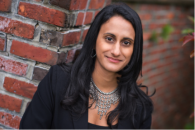
WENDY WOODSON is a writer, director, choreographer, and video artist and the Roger C. Holden Professor of Theater and Dance at Amherst College. She has created 95 works for stage and video presented in the U.S., Europe, New Zealand and Australia. Dance and theater works have been performed in such venues as the John F. Kennedy Center, LaMaMa Etc. NYC, LaMaMa Melbourne, the Smithsonian, Jacob’s Pillow, Emerson Majestic Theater, Washington Project for the Arts, Wolf Trap, PS 122 and at many colleges and universities. Her video works and installations have been exhibited at festivals throughout the US, in Germany, Sarajevo, the DeCordova Museum and Immigration Museum, Victoria in Melbourne Australia. Among other awards, she has received fellowships and grants in choreography, playwriting and video from the National Endowment for the Arts, the Massachusetts Cultural Council and the D.C. Commission on Arts & Humanities, the Bellagio Rockefeller Foundation, and the Fulbright Commission.
Drift
Drift is a work in progress, a performance free association monologue that travels through myriad images, associations and thoughts about atmospheres and the weather. It is written and performed by artist Wendy Woodson.
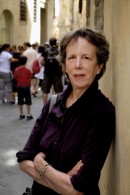
TONGZHANG ZHENG earned a ScD in Epidemiology from Harvard University and a medical degree from the Tongji Medical School, China. He is currently Professor of Epidemiology and the Director of Brown-China Center for Environmental Health Sciences at Brown University School of Public Health. For 12 years prior to joining Brown in 2015, he was a Susan Dwight Bliss Professor of Epidemiology and the Chairman of the Department of Environmental Health Sciences at Yale University. He has been conducting epidemiological research to investigate the relationship between environmental exposure, genetic polymorphisms, epigenetic factors and gene-environment interactions associated with the risk of various cancers and child development in the US and China.
Air pollution & human health in China: Establishment of a nationwide monitoring network
The extraordinary rapid economic development in China during the past 3 decades has led to severe environmental deterioration, particularly air pollution, due to high energy consumption and increased automobile emissions. China now has the world’s most polluted cities. It is estimated that the annual economic loss in China due to air pollution alone could reach 13% by 2020. Realizing that nationwide environmental deterioration could jeopardize economic development, the Chinese government called for environmental protection. China’s National Institute of Environmental Health Sciences has a mandate from the central government to establish a nationwide monitoring network on China’s air pollution and human health. This nationwide effort formally launched in 2014 and currently involves 63 Chinese cities with 126 monitoring sites. The network will collect information on toxic gas emissions and particulates in the atmosphere and meteorological data, and will analyze particulate (PM2.5) components from each of 126 monitoring sites. Data on cause-specific mortality, emergency and outpatient visits will be collected from provincial or municipal level CDCs at each site. Lung function tests will be conducted by trained technicians using spirometry for randomly selected school students at grade 3-5 at each monitoring site. The data from the network will help the government to produce public health policy associated with air pollution and human health.
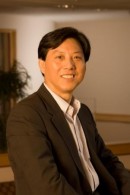


This program is an activity of The Institute at Brown for Environment and Society (IBES), an interfaculty initiative at Brown University. The Institute is concerned centrally with the challenges facing us in ensuring sustainable life, and so aims to stimulate conversations across the natural and social sciences, humanities and the arts.
